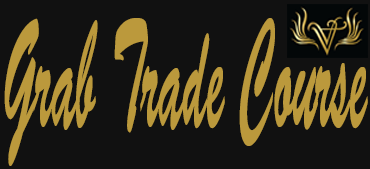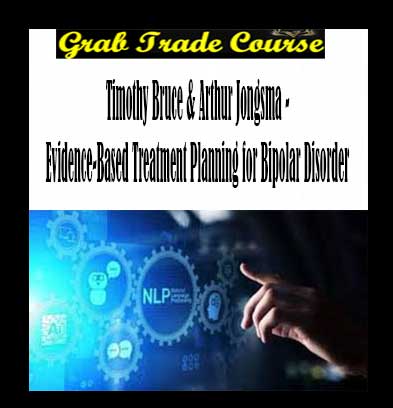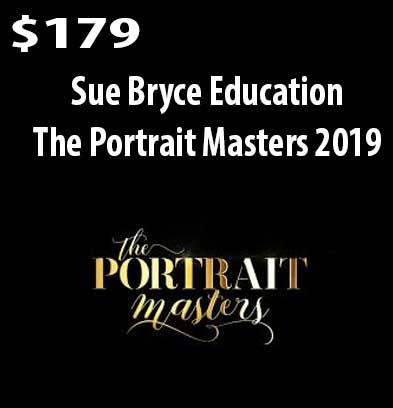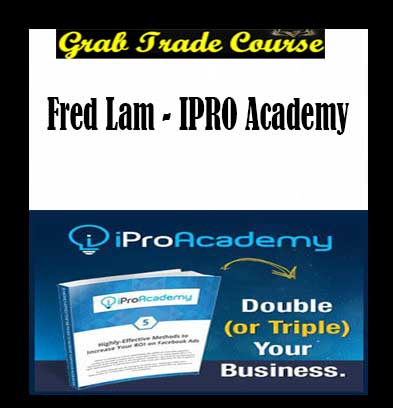Timothy Bruce & Arthur Jongsma – Evidence-Based Treatment Planning for Bipolar Disorder
Description
Timothy Bruce & Arthur Jongsma – Evidence-Based Treatment Planning for Bipolar Disorder review, Timothy Bruce & Arthur Jongsma – Evidence-Based Treatment Planning for Bipolar Disorder download, Timothy Bruce & Arthur Jongsma – Evidence-Based Treatment Planning for Bipolar Disorder free
Timothy Bruce & Arthur Jongsma – Evidence-Based Treatment Planning for Bipolar Disorder
Ten to twenty percent of people diagnosed with bipolar disorder will commit suicide, and 75% of them will not be properly diagnosed within the first three years of treatment. With stakes this high, it’s essential to understand the complexities of Bipolar Disorder. Learn how to build effective, evidence-based treatment plans in this indispensable video.
Without a clear game plan for treating clients with Bipolar Disorder, therapists may find themselves in a complex and precarious situation. Because this condition is notoriously difficult to treat—partly due to its sharing features with related or co-occurring conditions—clinicians need both a theoretical and an applied understanding to be effective. In this video, expert clinicians Drs. Timothy Bruce and Arthur Jongsma provide fresh insight into Bipolar Disorder, its subtypes, and its empirically supported treatments. With thorough descriptions of symptoms and thoughtful commentary on four different case vignettes, Bruce and Jongsma give practitioners a solid foundation for successful treatment.
Beginning with an overview of Bipolar Disorder and its DSM features, Bruce and Jongsma include comprehensive descriptions of the major depressive, manic, hypomanic, and mixed episodes related to this diagnosis. Noting that treatment plans aren’t created in a vacuum, but rather tailored to each client within the context of an authentic, empathic relationship, the two clinicians anchor their six-step treatment plan in empirically supported treatments (ESTs). A brief history of the EST movement provides further context.
Bruce and Jongsma highlight sample treatment plans here, and provide useful commentary on a series of case vignettes featuring both individual and group clients. You’ll watch therapists incorporate skillful interventions (including psychoeducation, cognitive restructuring, family involvement, self-monitoring, and activity regulation) based on the approaches of Family-Focused Therapy, Interpersonal and Social Rhythm Therapy, and Cognitive-Behavioral Therapy. Behavioral definitions, short-term objectives, and long-term goals are covered too, making for a well-rounded set of tools you can start using immediately to support clients while meeting increasingly stringent professional standards.
If you’ve been searching for instructional resources on Bipolar Disorder or want to learn how to build strong, evidence-based treatment plans aligned with the latest empirically supported methods, be sure to add this video to your library.
In Depth
These days, clinicians are increasingly required to submit empirically supported, measurable treatment plans for clients with a variety of presenting problems—but what these plans actually look like isn’t clear to most clinicians. In the case of bipolar disorder, this task can be especially perplexing given the disorder’s various subtypes and mood-related features, each warranting its own set of goals and interventions. If you’ve been wondering what, exactly, are the differing criteria for bipolar disorder or have searched for resources on its empirically supported treatments, you’ll find answers in this content-rich video with Drs. Timothy Bruce and Arthur Jongsma. Here, the two experts tell you everything you need to know about building treatment plans that pass muster with funding sources and serve as your own resource for supporting clients with bipolar disorder.
Bruce and Jongsma start by presenting an overview of the DSM criteria for bipolar disorder, its subtypes (bipolar I, bipolar II, and cyclothymia), and its features within the context of mood disorders (major depressive, manic, hypomanic, or mixed episodes), moving on to a brief history of the empirically supported treatment (EST) movement. The instructors then outline several ways to integrate ESTs into bipolar disorder treatment. You’ll learn how to compose a six-step treatment plan based on Family-Focused Therapy, Interpersonal and Social Rhythm Therapy, and Cognitive-Behavioral Therapy, and you’ll watch these approaches in action, with live case vignettes in a variety of settings that include individual, group, and family therapy. Live commentary follows each case, helping you integrate what you’ve just seen and contextualize it within an evidence-based framework.
If you’re looking to deepen your understanding of evidence-based treatment planning and the empirically supported treatments on which they’re based, you’ll be excited to get your hands on this information-packed video.
- By watching this video, you will:Understand the DSM criteria for bipolar disorder, its subtypes, and its related mood conditions.
- Know the history of empirically supported treatments (ESTs) and those designated for bipolar disorder.
- Learn to build a six-step treatment plan for bipolar disorder informed by evidence-based practices.
Specs
Length of video: 1:18:11
English subtitles available
Bios
Timothy Bruce, PhD, is Professor and Associate Chair of the Department of Psychiatry and Behavioral Medicine. A summa cum laude graduate of the honors program curriculum at Indiana State University, Bruce received his Ph.D. in Clinical Psychology from The University at Albany-State University of New York under the mentorship of Dr. David Barlow. He completed his residency training at Wilford Hall USAF Medical Center under the direction of Dr. Robert Klepac.
Bruce is active in the clinical, educational, and scholarship missions of the department. He serves several administrative positions in the department including Associate Chair, Director of Medical Student Education, and Director of the Psychiatry Residency Scholarship Program. Bruce’s contributions to the literature include over 30 books and training manuals, as well as numerous professional journal articles, book chapters, encyclopedia articles, and other works. His areas of interests include education and training, the evidence-based practice of clinical psychology, and cognitive behavioral therapies. In addition to maintaining his own clinical practice, Bruce supervises the psychotherapy training of residents. Recognized for his work in academic administration as well as classroom and clinical teaching, Bruce has received over three dozen awards for his efforts in these areas to date.
Most recently, Bruce has been contributing editor and co-author of Arthur Jongsma’s widely used PracticePlanners© Series, empirically informing it with results from the psychotherapy outcome literature.
Our Policies
A. Product Quality
We will provide GOOD quality of courses fast. If any issue, email: [email protected].
We sure that your problem will be support as soon as possible.
B. Digital Shipping Proceess
After your payment, we will review your payment, Then, we will send you PCLOUD LINK OF COURSES through email in 3 – 8 hours. If any issue, we will inform you as soon as possible.









Reviews
There are no reviews yet.